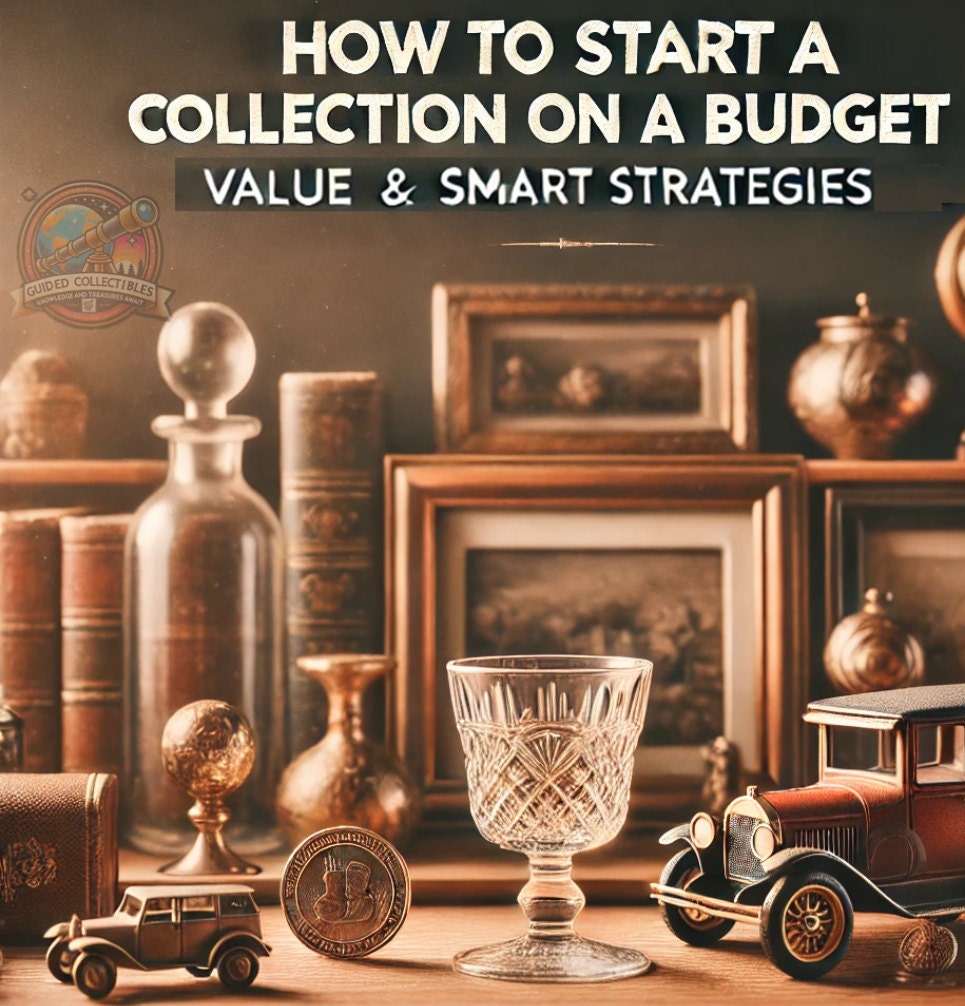Enjoyment, Value, and Smart Strategies
Collecting is a journey—one that can bring joy, preserve value, and even teach you a thing or two about the economy. But let’s be real: starting a collection can feel overwhelming, especially if you’re on a budget. The good news? It doesn’t have to be. With the right approach, you can collect items you love while keeping your wallet happy.
What’s the Purpose of Your Collection?
Before diving in, ask yourself: Why do I want to collect?
- Is it purely for joy? Maybe you’re drawn to the artistry of crystal, the nostalgia of vintage toys, or the craftsmanship of antique furniture.
- Do you want to preserve value? Collectibles can hold or even grow in value over time, similar to traditional investments. But remember, there’s a learning curve, and just like with stocks, research is key.
Here’s an example: Hummels. If someone bought them in the 50s, 60s, or 70s, they likely lost 30-40% of their purchasing power due to the ebb and flow of that market. However, if you shop smart today—buying at the right price and doing your research—they’re less likely to depreciate further. After all, Hummels have not been made by Goebel since 2008, which adds to their scarcity. It’s the same principle as investing in stocks: buying blindly at any price point is a recipe for disaster.
Another example is bullion. If you bought gold at its peak in 2011-2012, you wouldn’t have seen gains for nearly a decade. If you had bought silver during that same period, you’d still be down today, as it hasn’t returned to its peak. This underscores an important principle: bullion, like collectibles, should be treated as insurance. The goal isn’t always to make a profit but to preserve purchasing power. The key advantage? Bullion doesn’t ever go to zero—just as many well-researched collectibles won’t either. As always, research is critical to making informed decisions.
So why not aim for both? Find something you enjoy that also holds value. Collecting becomes even more fun when you can snag a great deal on something you love that also has potential worth. Why do you think the wealthy collect? It’s not just because they can—it’s because collectibles can be traded, bartered, or even used as collateral.
How to Start Smart: Actionable Tips
Once you’ve identified what excites you, here’s how to start collecting without breaking the bank:
- Do Your Homework
- Find podcasts, blogs, and forums on your area of interest.
- Look for a variety of perspectives. For example, if you’re into bullion, follow both stackers (who buy for weight) and numismatists (who value rarity).
- Learn how to identify authenticity. For instance, if you’re into Red Skelton art, check the frame—it should be a two-toned cream color with a gold nameplate. If it’s been reframed, its value may be affected.
2. Research Pricing
- Always check the general value of an item before buying. $30+ for shipping, while others offer free shipping but inflate the item’s price.
3. Talk to Sellers
- Don’t be afraid to negotiate. Many sellers, myself included, are willing to work with buyers to help them achieve their goals.
- Even if a seller can’t adjust their pricing, you’re not at a loss for asking.
4. Start Small
- Focus on smaller, budget-friendly items. For example, if you love crystal, start with a few retired Waterford pieces. Buy one or two at a time, based on what your budget allows.
- Over time, these smaller pieces can grow into a meaningful collection.
5. Visit Local Shops and Sales
- Estate sales, auctions, and even thrift stores can be goldmines.
- Build relationships with local collectible shops—they may offer insights, deals, or even help you find specific items.
Why Collecting on a Budget Works
Collecting on a budget doesn’t mean sacrificing quality or value. In fact, it can make the process even more rewarding. When you’re strategic, you’re not just buying items—you’re building a collection that reflects your interests and goals. And when you find that perfect piece at a great price, it’s a win-win.
Final Thoughts: A Journey Worth Taking
Whether you’re collecting for joy, value, or both, remember that it’s a journey. Take your time, do your research, and enjoy the process. Collecting isn’t just about the items themselves—it’s about the stories they tell and the connections they create.
Let’s Hear From You!
What’s your collecting journey like?
- Do you have a favorite item you’ve found on a budget?
- What’s a dream piece you’d love to add to your collection?
Drop your thoughts in the comments—I’d love to hear your stories and tips!

